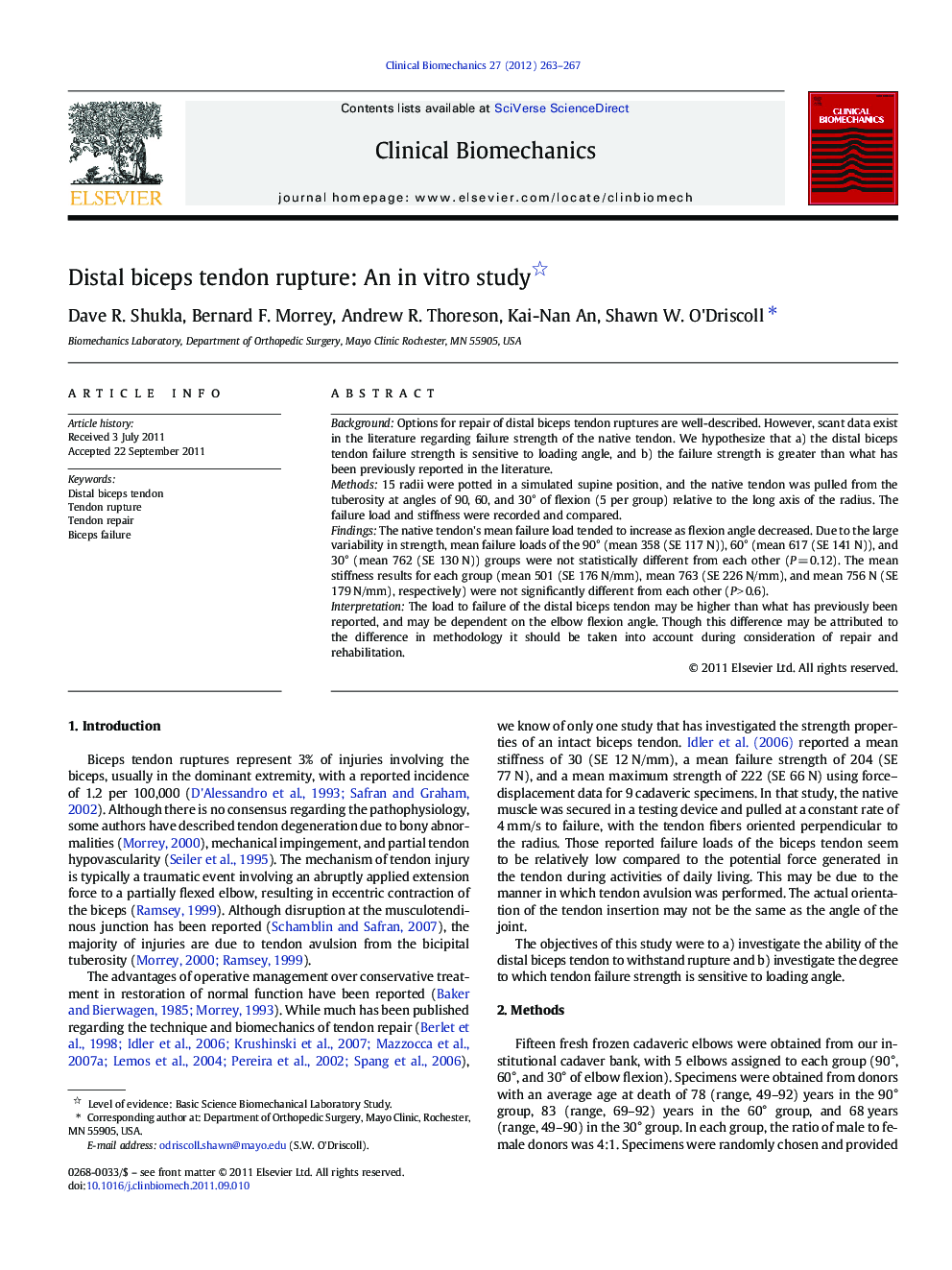| Article ID | Journal | Published Year | Pages | File Type |
|---|---|---|---|---|
| 4050641 | Clinical Biomechanics | 2012 | 5 Pages |
BackgroundOptions for repair of distal biceps tendon ruptures are well-described. However, scant data exist in the literature regarding failure strength of the native tendon. We hypothesize that a) the distal biceps tendon failure strength is sensitive to loading angle, and b) the failure strength is greater than what has been previously reported in the literature.Methods15 radii were potted in a simulated supine position, and the native tendon was pulled from the tuberosity at angles of 90, 60, and 30° of flexion (5 per group) relative to the long axis of the radius. The failure load and stiffness were recorded and compared.FindingsThe native tendon's mean failure load tended to increase as flexion angle decreased. Due to the large variability in strength, mean failure loads of the 90° (mean 358 (SE 117 N)), 60° (mean 617 (SE 141 N)), and 30° (mean 762 (SE 130 N)) groups were not statistically different from each other (P = 0.12). The mean stiffness results for each group (mean 501 (SE 176 N/mm), mean 763 (SE 226 N/mm), and mean 756 N (SE 179 N/mm), respectively) were not significantly different from each other (P > 0.6).InterpretationThe load to failure of the distal biceps tendon may be higher than what has previously been reported, and may be dependent on the elbow flexion angle. Though this difference may be attributed to the difference in methodology it should be taken into account during consideration of repair and rehabilitation.
